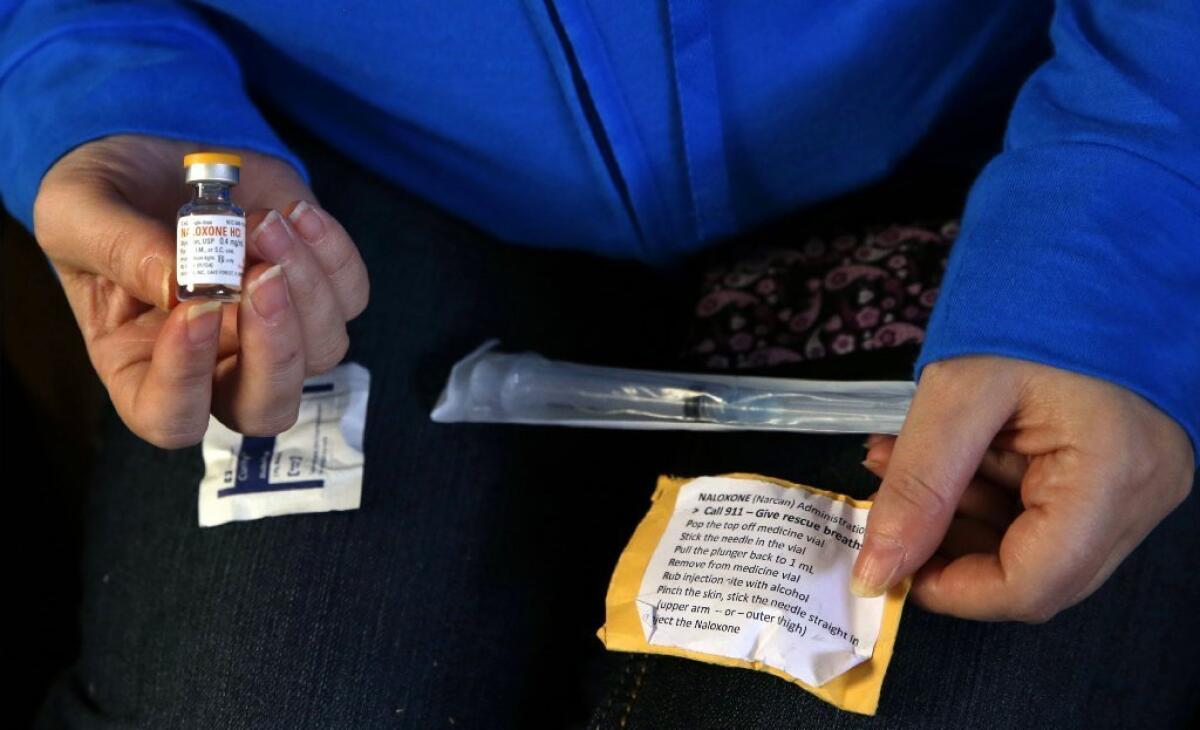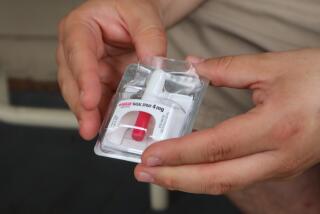Antidote for opioid overdoses now available without a prescription

- Share via
California pharmacists can hand out an overdose antidote to patients on powerful painkillers without requiring a prescription under new rules aimed at curbing drug-related fatalities.
Pharmacists in the state will also be able to distribute the antidote to heroin addicts.
Patients and addicts may obtain the potentially life-saving medication naloxone simply by asking for it. Pharmacists who believe a customer may be at risk also may suggest the antidote, according to the state Board of Pharmacy.
Opioids are powerful narcotics, and the class includes heroin and prescription painkillers such as Vicodin and Perocet. An overdose — either alone or with alcohol or other drugs — can lead to respiratory depression and death.
Naloxone is an inexpensive medication that can reverse the life-threatening effects of an opioid overdose. It is sold as a nasal spray and an injection.
In 2012, there were more than 1,800 opioid-related deaths in California, 72% of them involving prescription pain medications, the pharmacy board said. Nationally, such drugs have contributed to more than 170,000 deaths over the last 15 years. Commonly prescribed opioids also include OxyContin, Norco, Opana, Roxicodone, Demerol and Dilaudid.
The new rules require pharmacists who wish to dispense naloxone to take an hour-long training course. They will learn how to screen out patients who may have a sensitivity to the drug, as well as how to educate potential users.
Anyone who administers naloxone must also immediately call 911 for medical assistance. Although the drug can restore breathing, it also may thrust the recipient into potentially painful withdrawal.
The new regulations, enacted this month by the Board of Pharmacy and approved by the Medical Board, are the result of a law passed last year.
Follow me on Twitter @lisagirion and “like” Los Angeles Times Science & Health on Facebook.







